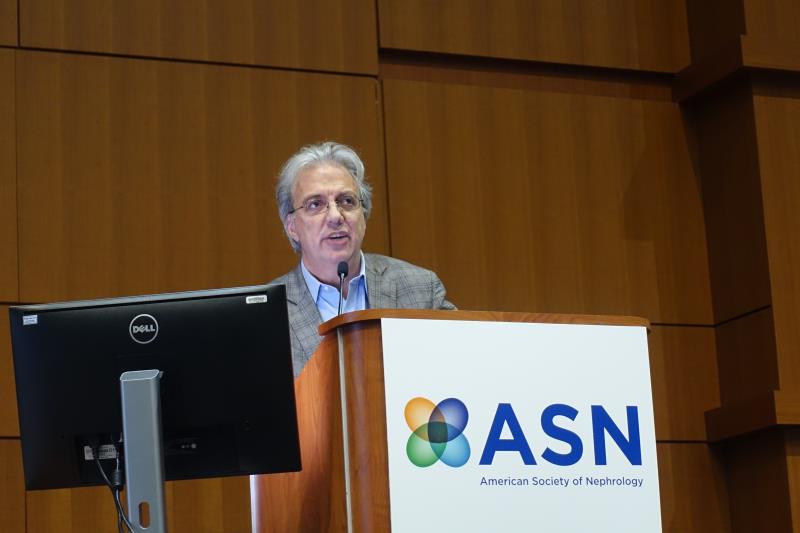 Dr Alessandro Doria
Dr Alessandro DoriaA 3-year sustained reduction of serum uric acid (SUA) with allopurinol was of no benefit to type 1 diabetes (T1D) patients with mild-to-moderate kidney disease, according to the PERL* study presented at the ASN 2019 Meeting.
“On the one hand, we are disappointed because we don’t have something new to offer to people with T1D who are at risk for kidney problems,” said Dr Alessandro Doria from Joslin Diabetes Center in Boston, Massachusetts, US.
“On the other hand, we are quite satisfied by the fact that we have provided a clear, unambiguous answer to an important scientific question.”
In the multinational, double-blind trial, 530 T1D patients (median age 52 years, 66 percent male) with kidney disease were randomized to receive allopurinol or placebo in a 1:1 ratio. Kidney disease was defined as having an estimated glomerular filtration rate (eGFR) of 40–99.9 mL/min/1.73m2, SUA ≥4.5 mg/dL, and micro- to macroalbuminuria or normoalbuminuria with a historical eGFR decline of ≥3 mL/min/1.73m2 per year. [ASN 2019, abstract FR-OR137]
During the trial, mean SUA levels were significantly reduced in the allopurinol group vs the control group (4.1 vs 6.2 mg/dL; p<0.0001), showing that allopurinol was effective in lowering SUA for a sustained period.
After 3 years, the primary outcome of baseline-adjusted iohexol GFR (iGFR) following a 2-month washout period was almost identical in the allopurinol and the control groups (least-squares [LS] mean, 61.2 mL/min/1.73 m2 for both; p=0.99).
The rates of iGFR decline were also similar between the two groups over 3 years of treatment (mean, -3.0 vs -2.5 mL/min/1.73m2/year; p=0.25), which according to Doria, were close to the rate of -3.0 mL/min/1.73 m2/year that is expected in untreated subjects.
There were no significant differences between the two groups in other secondary outcomes such as eGFR decline rate (p=0.46), time to serum creatinine doubling or ESKD (hazard ratio [HR], 1.25, 95 percent confidence interval [CI], 0.5–2.9), and cardiovascular events (HR, 1.9, 95 percent CI, 0.8–4.5).
Urine albumin excretion rates (AER) after washout (p=0.035) and treatment (p=0.024) were higher with allopurinol than placebo (baseline-adjusted geometric means, 42.9 vs 31.7 μg/min; p=0.035).
Previously, preclinical and epidemiological studies have suggested that high SUA was associated with an increased risk of kidney disease in T1D patients — holding out the possibility that SUA lowering with allopurinol could slow the progression of kidney disease.
“PERL found no significant benefit of sustained SUA reduction on kidney outcomes in persons with T1D, mild-to-moderate GFR reduction, and SUA levels above the median,” Doria concluded. “Thus, the field should look elsewhere for novel ways to benefit this debilitating diabetic complication in patients with similar characteristics to the PERL participants.”
Nonetheless, the study population was limited to a subset of patients with diabetes who met the study inclusion criteria and thus, could not be generalized to other patient population. “We cannot exclude that in people with type 2 diabetes or with different stages of kidney disease, there might be an effect,” he said.
According to Doria, the team has plan for a long-term follow-up of the unique, well-characterized T1D cohort to provide novel insights into the natural history and the molecular mechanisms of GFR loss in these patients.
“We have an amazing biobank of samples that we collected during the study,” said Doria. “And one can correlate biomarkers measured in those samples with long-term health outcomes. The longer the follow-up, the more power there is in the study because we'd have a longer snapshot of the trajectory of declining kidney function in these people.”